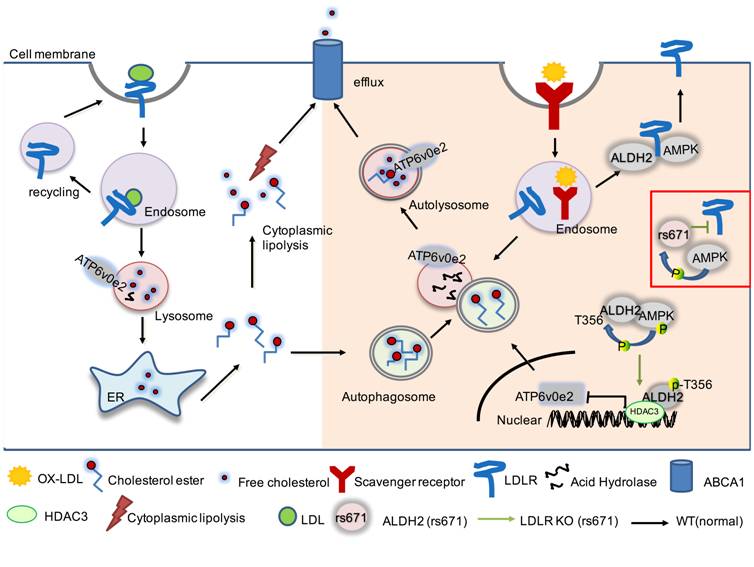Chinese Researchers Reveal Novel Mechanisms of ALDH2 in Regulating Macrophage Foam Cell Formation of Atherosclerosis
Cardiovascular disease (CVD) is the leading cause of deaths in the world. Atherosclerosis is the major cause for CVD and macrophages play an important role in the progression of atherosclerosis. Macrophages take up the oxidized low-density lipid protein (ox-LDL) and degrade it in lysosomes. Dysfunctional lysosomes may lead to the accumulation of lipids and foam cell formation, an early hallmark of atherosclerosis.
Acetaldehyde Dehydrogenase 2 (ALDH2) belongs to aldehyde dehydrogenases family, which plays a key role in the metabolism of ethanol-derived acetaldehyde and other toxic lipid aldehydes. Around 30-50% of East Asians possess a single nucleotide polymorphism (SNP), ALDH2 rs671 mutant, which is believed to be responsible for alcohol-flush reaction. Humans carrying ALDH2 rs671 have poor ability of ethanol metabolism due to the significant loss of ALDH2 enzymatic activity. Epidemiological studies have shown that ALDH2 rs671 SNP is positively correlated with an increased risk of CVD. However, it remains unclear how ALDH2 rs671 SNP is related to atherosclerosis beyond alcohol consumption.
In a recent published study by a second-year PhD student ZHONG Shanshan, supervised by Prof. YIN Huiyong, and colleagues found that in the absence of LDL receptor (LDLR), adenosine 5'-monophosphate-activated protein kinase (AMPK) phosphorylates ALDH2 at threonine 356 and enables ALDH2 nuclear translocation. Nuclear ALDH2 interacts with histone deacetylase 3 (HDAC3) and represses transcription of a lysosomal proton pump protein ATP6V0E2, critical for maintaining lysosomal function and degradation of oxLDL. Interestingly, an interaction of cytosolic LDLR C-terminus with AMPK blocks ALDH2 phosphorylation and subsequent nuclear translocation, whereas ALDH2 rs671 mutant in human macrophages attenuates this interaction, which releases ALDH2 to nucleus to suppress ATP6V0E2 expression, resulting in increased foam cells.
This study has revealed a novel role of ALDH2 and LDLR in atherosclerosis and provided a molecular mechanism by which ALDH2 rs671 SNP increases CVD.
This work was published online on Oct. 31 in The Journal of Clinical Investigation as a research article entitled “Acetaldehyde Dehydrogenase 2 Interactions with LDLR and AMPK Regulate Foam Cell Formation”. An editorial commentary is also published in the same issue. The work is assisted by Dr. WU Yun-Cheng and his research team at the Department of Neurology, Shanghai General Hospital, Shanghai Jiao Tong University School of Medicine, Shanghai, China. Discussions with Dr. Dawei Zhang at University of Alberta, Canada, is also highly appreciated.
This study was funded by the grants from the Ministry of Science and Technology of China (MOST), National Natural Science Foundation of China (NSFC), and Chinese Academy of Sciences (CAS).

Mitochondrial ALDH 2 regulates macrophage foam cell formation through interacting with LDLR and AMPK
(Image by Prof. YIN Huiyong’s Lab)
Media Contact:
WANG Jin (Ms.)
Shanghai Institute of Nutrition and Health,
Chinese Academy of Sciences
Email: sibssc@sibs.ac.cn
